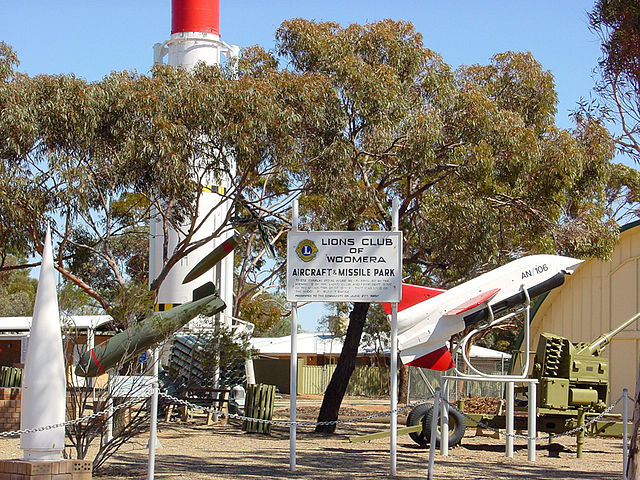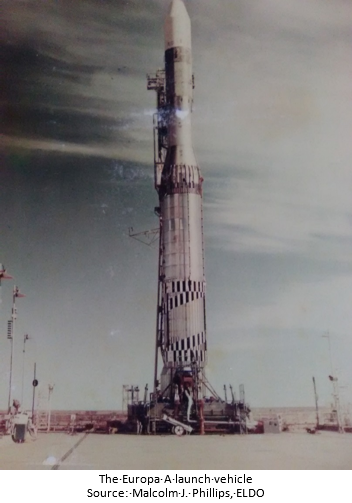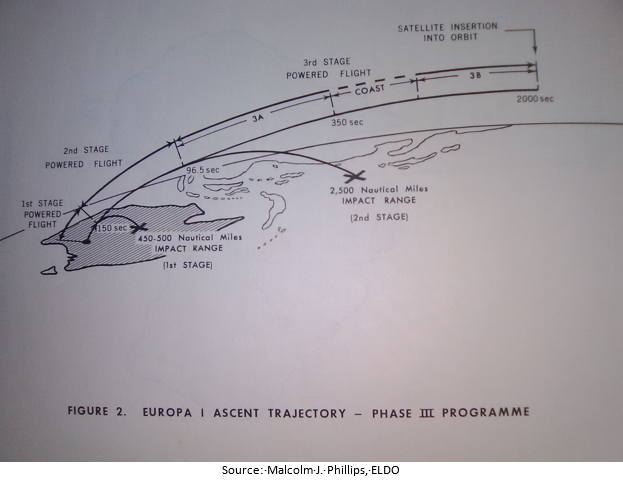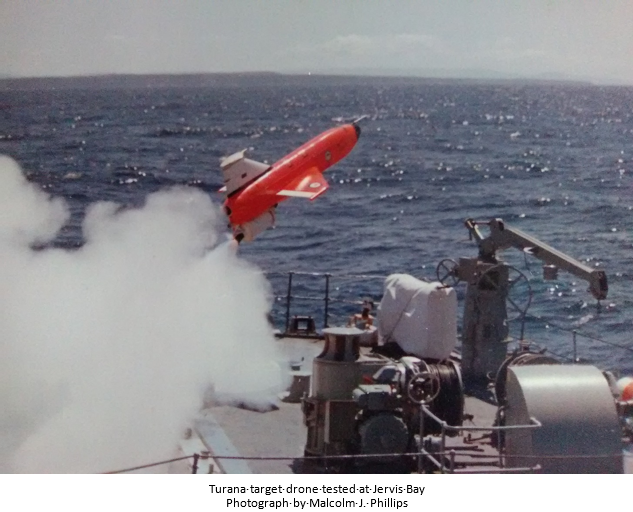
This is the seventh in our series ‘Australia in Space’ leading up to ASPI’s Building Australia’s Strategy for Space conference in June.
In the late 1950s, the relevance of space to many Australians was made clear by the launch of Sputnik 1 from the Soviet Union. In the next several years after the 4 October 1957 launch from the Baikonur Cosmodrome, the US and Europe developed similar space launch capabilities.

While the US created the National Aeronautics and Space Administration (NASA) and chose to go to the Moon, in Europe, the already active Blue Streak ICBM program was the basis for Britain and France agreeing in 1961 to join in the development of a multinational space launch program. This was known as the European Launcher Development Organisation (ELDO). Belgium, West Germany, Italy and The Netherlands also joined.
ELDO sought to develop a multi-stage launch vehicle, first named ELDO 1 and later renamed EUROPA-A. That vehicle consisted of the British Blue Streak first stage, a French second stage and a German third stage, with Italy developing a satellite as the payload.
The launch site for the missions was to be in Australia, at the Woomera Missile Range. Britain and Australia had used the range for military weapons testing since 1947. The EUROPA-A launch complex would be the one that had already been developed for the British Blue Streak project.

The Woomera Test Range was the only land-based test range left in the Western world capable of testing the next (or what is now termed the ‘fifth’) generation of weapons systems within a fully instrumented, land-based, specialised test and evaluation range. That redefined the future role and strategic importance of the Woomera Range Complex within Australia’s long-term Defence requirements.
ELDO began in June 1964 with the first launch of the EUROPA-A vehicle. That test successfully launched the EUROPA-A’s first stage. Two more similar launches of the first stage were completed in the next nine months.
With confidence building that a multi-stage vehicle could reach orbit, seven more launches were attempted. Two launches in 1966 with dummy second and third stages were successful. The following year, two launches with powered second stages and dummy third stages were attempted. However, both of those launches suffered second-stage separation malfunctions.

The final three flights were carrying satellites for the first time and had all stages active. None succeeded: in the first two launches, the third stage exploded, and the final launch didn’t achieve a suitable orbit to deploy the satellite.
After that, ELDO stopped launching from Woomera and developed a new launch site in French Guiana in South America.
Other programs continued work at Woomera. One of the landmark events was the launch of an Australian satellite, WRESAT, in November 1967 using a spare Redstone vehicle. Australia became the third country after the US and Russia to launch its own satellite.
Another success occurred in October 1971 when a UK satellite was launched from Woomera on the British Black Arrow. Weapons Research Establishment also tested the Turana target drone for the Navy out of Woomera, and also from Jervis Bay.

The global enthusiasm for satellites and the realisation that it was the lifeline to everything from weather monitoring to the emerging world of the internet led to the search for a continuing mission for Woomera.
One company that saw such an opportunity was Kistler Aerospace in the US. It had a two‑stage reusable launch vehicle in development that could be reused 100 times. However, the company had problems in securing the US$1 billion in funds it needed for the project, despite receiving US$100 million from Northrup Grumman, and didn’t set up its program at Woomera.
The story of Woomera and missed opportunities in missile testing and space initiatives can be linked to the lack of political awareness of where this technical field was headed. From the beginning, the political will to take advantage of Woomera’s potential was muted. Voters saw little reason to prioritise funding to expand the facilities at Woomera or the programs using them, or to seek out new ways to use Woomera to further Australian space activities.
However, more recently Woomera has been ‘re-discovered’ by over 60 private start-up companies eager to implement their own space launch programs. Yet Defence is resisting calls to open up Woomera to commercial space activities because of sensitive military research and development occurring at the location.
The Turnbull government announced at the International Astronautical Congress in Adelaide last year that it would again launch a national space agency. That makes Australia the second-last OECD member to have its own.
So it would seem that, belatedly, both private industry and government are realising the importance of space as a sector of national development and growth. In that regard, there are unique capabilities inherent in the Woomera Range. The challenge for the federal government is to figure out how it’s going to balance military and civilian use within the facility.
Time will tell if—this time—the opportunities are realised.

